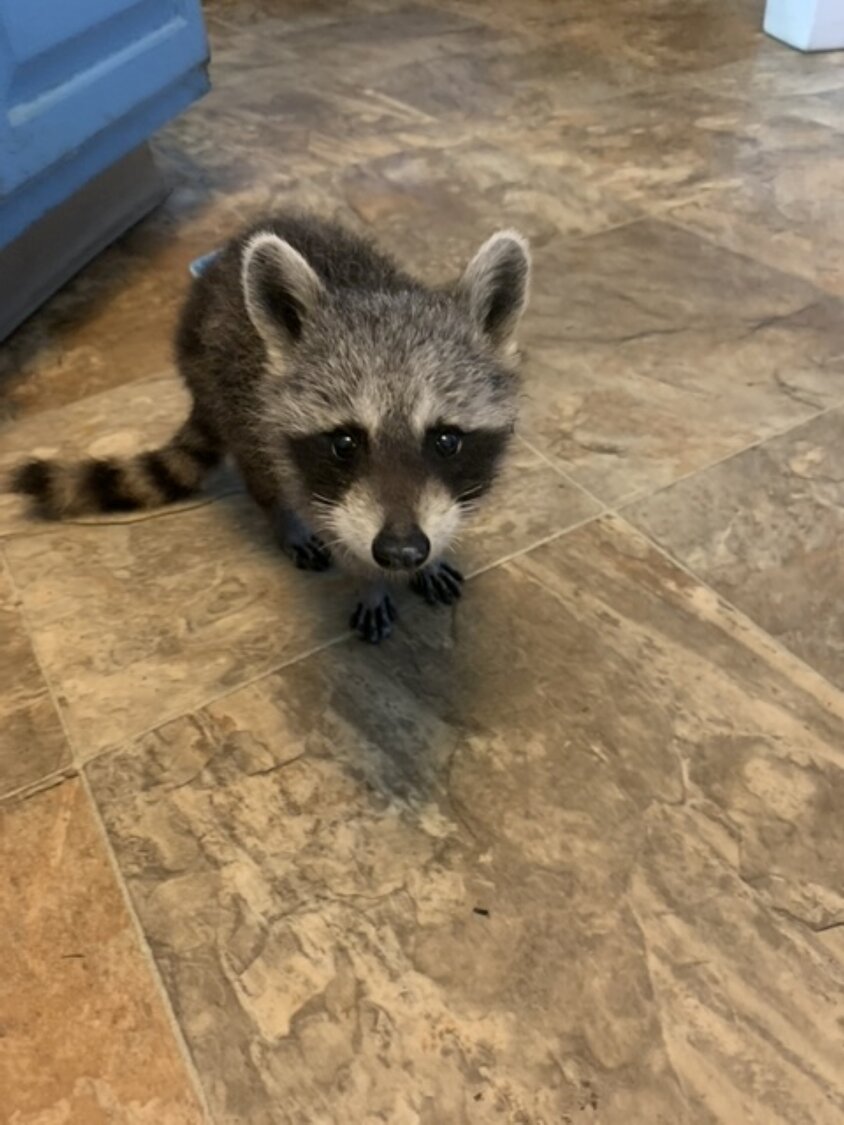Raccoon distemper at all-time high in Nassau County according to local experts
Disease spreading between raccoons and dogs
The raccoon distemper crisis on Long Island has reached alarming levels, prompting a closer examination of the disease’s impact on wildlife and the challenges faced by residents.
Insights from wildlife and rescue experts paint a comprehensive picture of the severity of the situation and the urgent need for collective action.
John Di Leonardo, executive director of the nonprofit animal rescue organization Humane Long Island, outlined the degenerative nature of raccoon distemper. He emphasized the progression of the disease from respiratory symptoms to severe neurological issues, leading affected raccoons to a state of docility and, in the worst cases, a near-vegetative condition.
Di Leonardo stressed that once the disease reaches certain stages, treatment becomes challenging, and humane euthanasia becomes necessary.
“They’ll start doing stereotypical repeated behaviors, like walking in circles or falling over or just not moving at all,” Di Leonardo continued. “Typically when it gets to the stages I’ve described, it’s not even really treatable anymore.”
Di Leonardo addressed the misconception that distemper in raccoons is related to cats. He clarified that distemper is highly contagious among raccoons and does not originate from feline sources.
He assured dog owners that distemper is easily preventable through vaccinations. Residents should avoid inhumane practices by not calling trappers or exterminators, he said. Instead, they should contact local wildlife rehabilitators if a raccoon is suspected of having distemper.
Leslie Hyder, a licensed wildlife rehabilitator based in East Meadow, said the disease has been spreading for approximately seven years, becoming a pervasive issue not only in New York but nationwide, and that she “could get in anywhere from one to seven a day that are sick.”
“I would say for a good seven years, I’ve seen one to seven cases every day all day,” Hyder continued. “It’s not just New York either, it’s really everywhere.”
She explained that the disease can spread to dogs through direct and indirect contact with infected raccoons, such as from raccoon feces. She added that owners must be especially careful if they’re taking their dogs on walks without leashes, because if they attack a raccoon, they can easily contract distemper.
Hyder described the various symptoms raccoons display as the disease progresses, including lethargy, disorientation, gooey eyes, nasal discharge, and, in severe cases, seizures.
Phyllis Glick, the former owner and operator of the animal control service Able Wildlife, LLC, in Baldwin, delved into the humane aspects of dealing with raccoons suffering from distemper.
She explained the neurological effects of the disease leading to symptoms such as seizures and impaired vision. Glick stressed the difficulty of treating distemper, advocating for euthanasia as the most humane option to end the raccoon’s suffering.
Addressing the spread of distemper, Glick outlined scenarios where raccoons cross-contaminate, emphasizing the risk of transmission through bodily fluids. She shared practical advice for homeowners, urging vigilance and recognition of signs of distemper in raccoons.
Glick added that the problem has spread throughout Long Island is in part due to considerate citizens who have moved sick raccoons off their property without contacting an expert, inadvertently increasing the spread of distemper throughout the island.
“As recently as a few years ago there was a huge outbreak of canine or raccoon distemper on the North Shore, at Port Washington, Sands Point, Oyster Bay,” Glick said. “It spreads when you get people that take a sick raccoon, not knowing that its sick, and they relocate them to the South Shore, they’ve now cross contaminated and brought that distemper down from the North Shore.”
Glick emphasized the importance of responsible pet ownership, especially regarding distemper vaccinations for dogs. She added that if owners had a raccoon with distemper on their property, she would encourage them to spray the area they had been staying in with bleach, while also encouraging them to keep their dogs in the house until the animal was removed.
As the crisis continues, residents are urged to stay informed, practice responsible pet ownership, and seek professional assistance for distressed wildlife. The collaboration between experts, residents, and government agencies becomes essential to effectively address this pressing issue. The urgency of the situation calls for collective action to protect both domestic animals and the local wildlife population.






